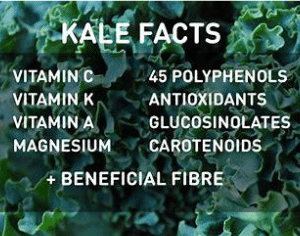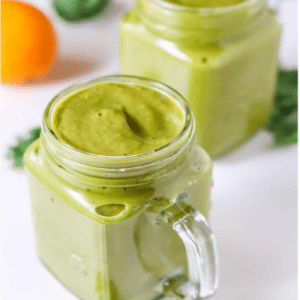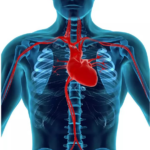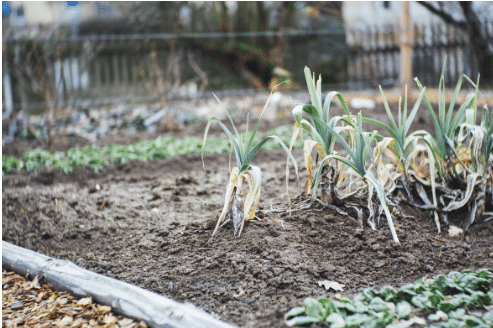Kale (Brassica oleracea var. acephala L.) belongs to the family Brassicaceae. Kale is often called “borecoles,” taken from the Dutch “Boerenkool,” and the plant is known in Holland and Germany as the peasant’s cabbage. It has many names in many languages because of its antiquity and use. Kale is considered native to the eastern Mediterranean or Asia Minor. Kales are probably the first brassicas to be cultivated, similar to wild cabbage. It was long back known to ancient Greeks and has grown in Europe for several thousand years as a hardy winter vegetable.

Kale plants are ornamentals with textured and curly leaves in green, purple, and other color shades. Kale grows relatively quickly, growing from seed to harvest in about three months. It is best planted in late winter or early spring but can be planted throughout the year. Kale returns yearly, but this biennial takes two years to complete its growth cycle. So the leaves grow in the first year, and the seeds and flowers grow in the second growing season.
Kale in India
In India, kale is not grown on a commercial basis. However, it is commercially grown in Kashmir, the most popular vegetable among the rich and poor. Kale grown in Kashmir is commonly known as “HAK.” In Kashmir, kale is grown round the year. Kale is annual when raised for leaves and biennial for seed production. The edible portion of kale is the leaves.
Kale: Nutrition/chemicals composition-
- Antioxidants
- Proteins
- Carbohydrates
- Vitamins
- Minerals
- Fiber
- Phytochemicals
- Glucosinolates
- Polyphenols

Kale nutrition- a healthy diet
Kale can be steamed, boiled, roasted, roasted, dehydrated, or eaten raw. The maintenance of its nutritional properties, and its main chemical constituents, is highly dependent on the type of cooking.
- Kale can be added to the diet as a salad.
- It is popularly used with lentils or avocado to make it delicious and more nutritive food.
- It is used in making healthy smoothies.
- Kale is popularly used in making chips. It is a substitute for potato chips.
- It enhances the taste and appearance of foods, such as omelets, casseroles, and soups.
Try this healthy and tasty smoothie recipe:
Ingredients:
Kale (chopped), Orange juice, Maple syrup, and Flax seeds.
Directions:
Add all the ingredients to the blender.
Blend until it gets smooth.
Pour it into a glass.
Serve with extra Maple syrup at the top.

Nutritive and Therapeutic Benefits of Kale
- Anti-inflammatory: Kale has Omega 3 in the form of alpha-linolenic acid and vitamin K., which helps regulate the body’s anti-inflammatory processes.
- Anti-oxidative: Kale is especially rich in the world’s three main antioxidant vitamins. Vitamin C, beta-carotene, and vitamin A. This is important because our bodies are exposed to free radicals every day from water chemicals, food toxins, and polluted air. When we breathe, antioxidants are known to fight damage caused by free radicals.
- Anti-cancerous: Carotenoids, lutein, beta-carotene, flavonoids, etc., present in kale are all anti-cancer compounds. Kale provides a healthy immune response due to the presence of these compounds.
- Reduces heart diseases: Kale contains Potassium, Vitamin C, and B6, which are good for heart health.
- Boosts Bone Health: Kale has a good proportion of Calcium and vitamin, which is good for our bone health. Inadequate intake of vitamin K is associated with an increased risk of bone fractures, as vitamin K improves calcium absorption. Calcium is essential for healthy bones and teeth, normal blood clotting, and the functioning of the nervous system.
- Detoxification: The isothiocyanate component in kale is a natural detoxifier for the body. This substance helps to eliminate toxins from the body.
- Lowering Cholesterol: Clinical studies from Biomed Environ have shown that kale lowers cholesterol and increases the HDL (High-Density Lipoprotein, good cholestrol): LDL (Low-Density Lipoprotein, bad cholesterol) ratio by 27%. Kale, both raw and cooked, can help lower cholesterol. However, studies have shown that steaming kale dramatically increases its ability to lower cholesterol. Steamed kale is 43 percent as potent as the cholesterol-lowering drug cholestyramine.
Conclusion
It is concluded that this green leafy vegetable is one of the most nutrient-dense food. It must be included in the diet, and people can use it in numerous ways. Kale consumption combats malnutrition and other diseases since it is loaded with antioxidants, fiber, and minerals. It lowers the risk of heart disease and aid in the fight against cancer. Kale is packed with so much nutrition your body will thank you for this incredible choice.
20/08/2022



